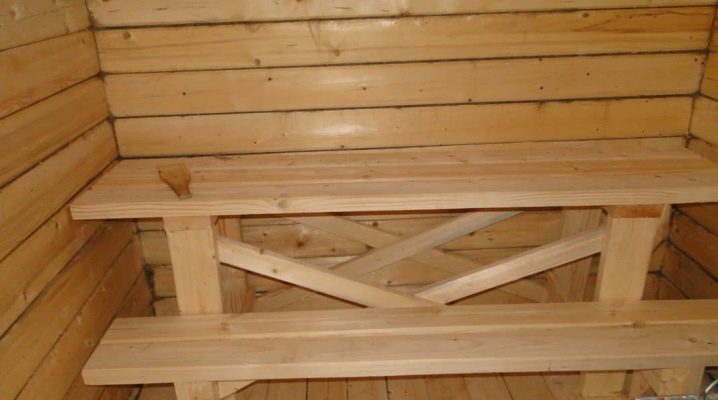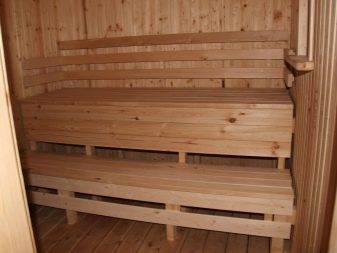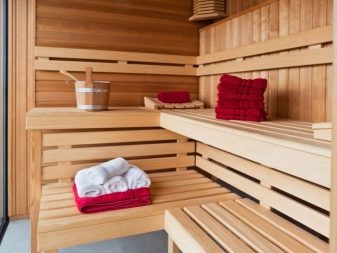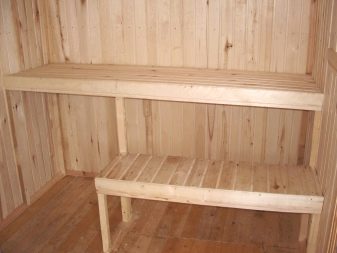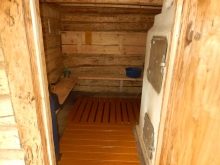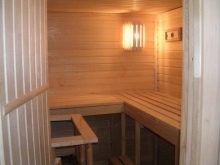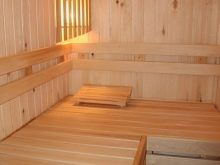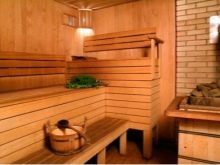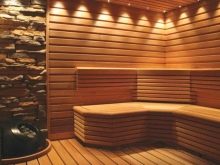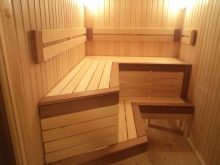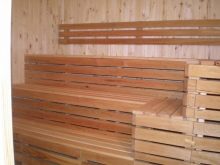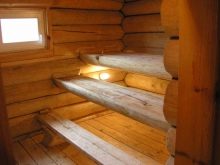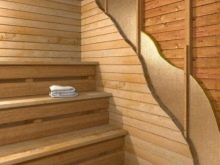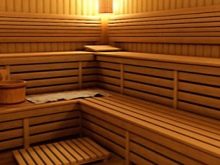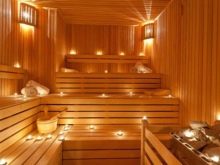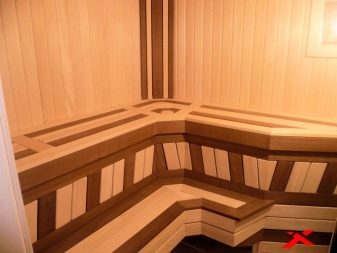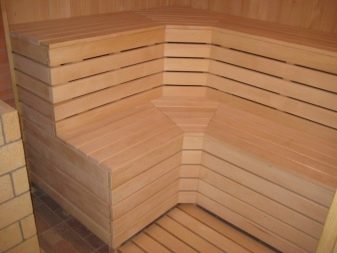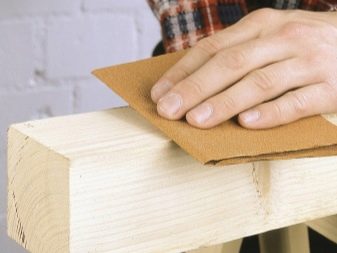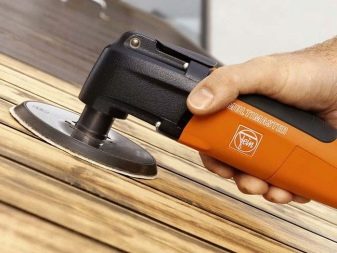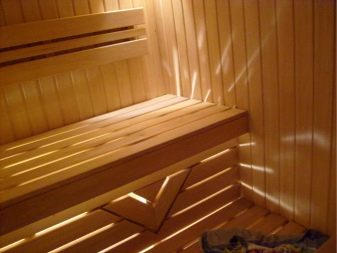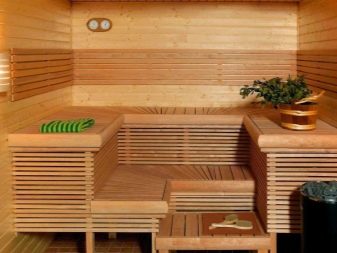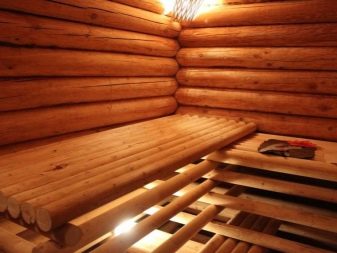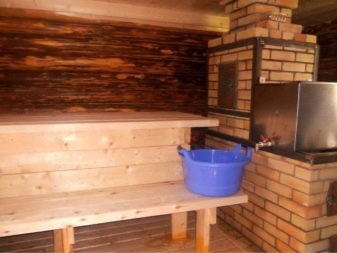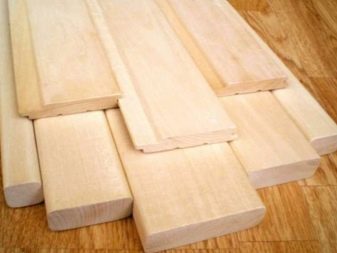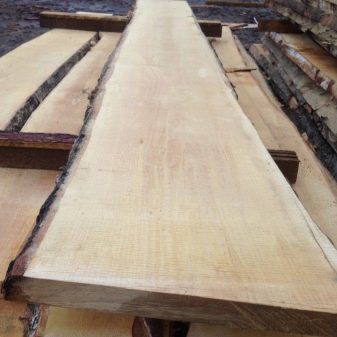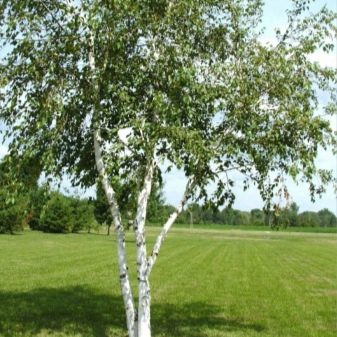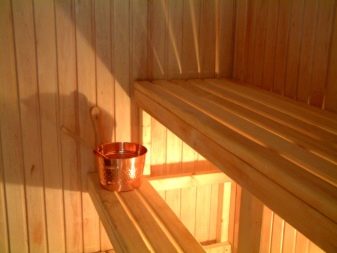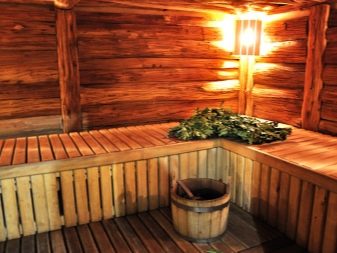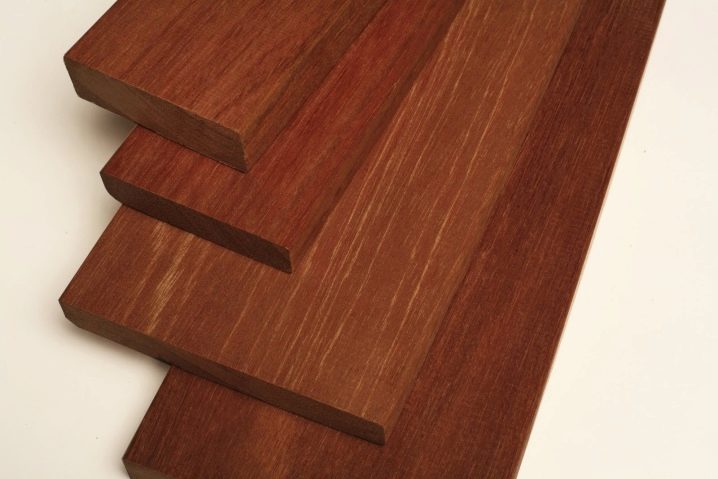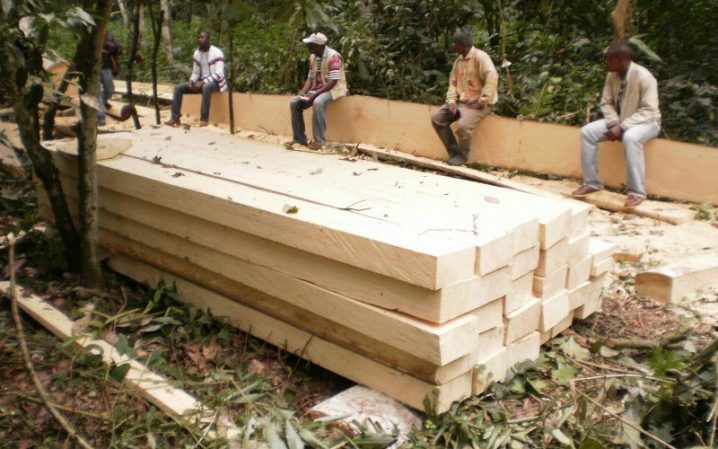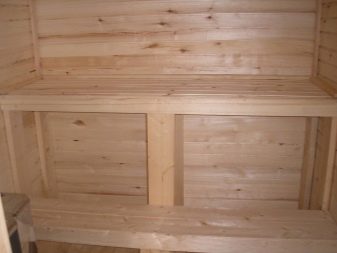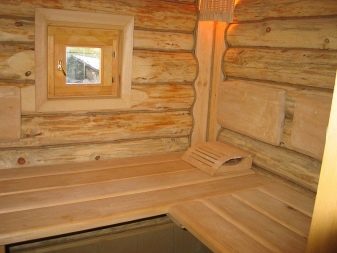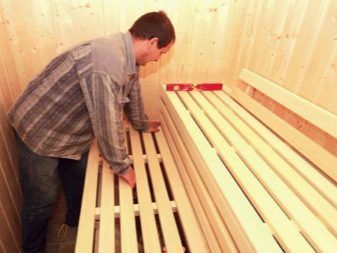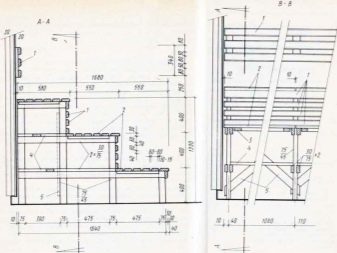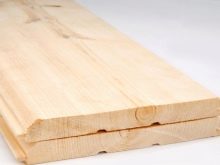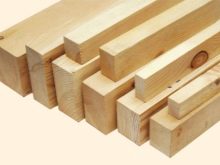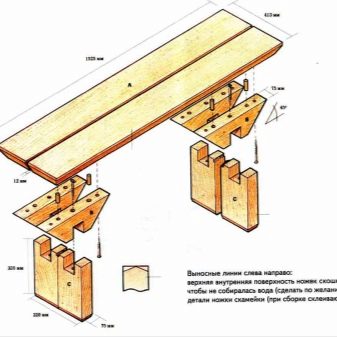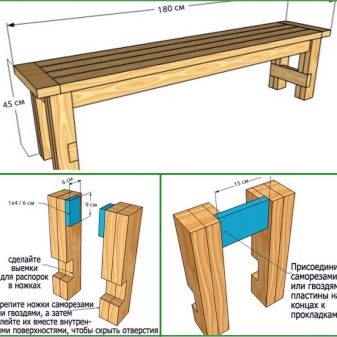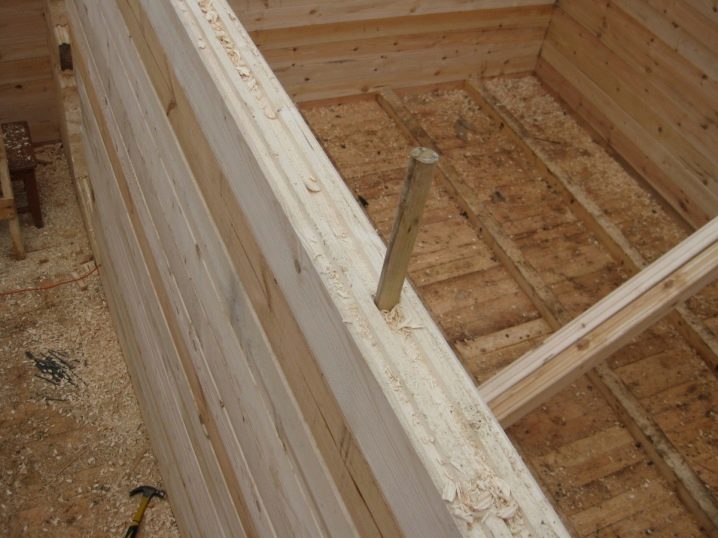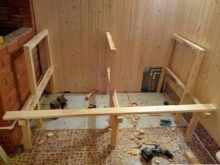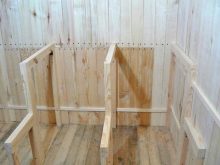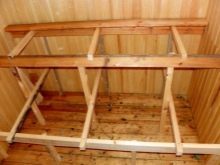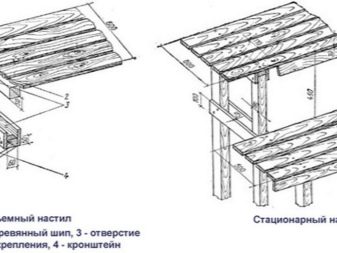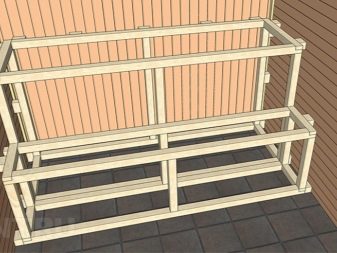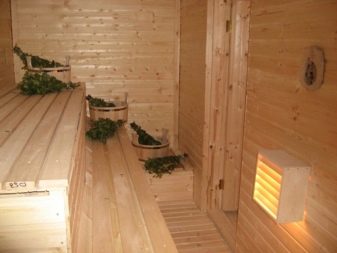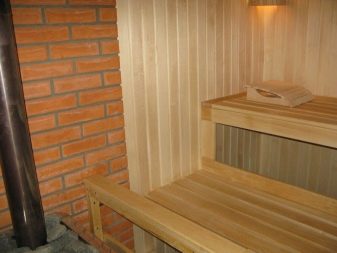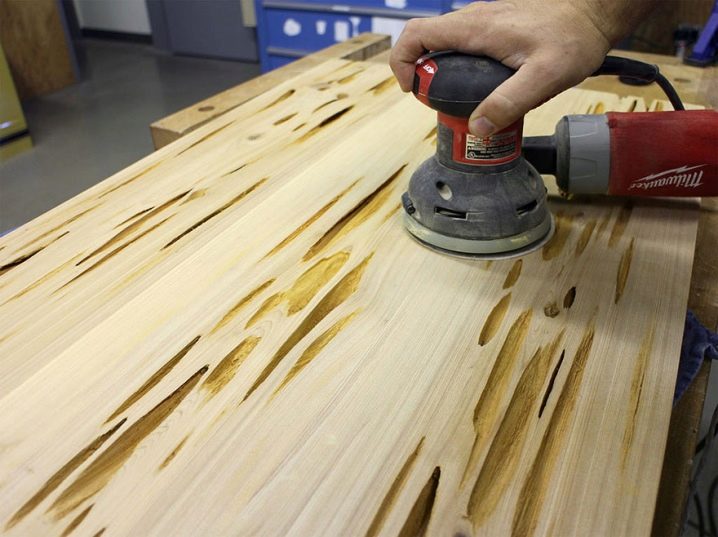Benches for a bath: the types and making their own hands
Bath on your site - the dream of many. Benches and benches in this design occupy an important position, they together weave decor and functionality. You can make such a construction yourself. So a bench in the bath will be a real pride of the owner.
Purpose and types
The bench can be portable or stationary. The size of the structure depends on the dimensions of the concrete country bath. The parameter 60-70 cm is considered a universal height. If a multi-tiered structure is made, the distance from the ceiling to the top point of the bench should be at least 1.2-1.3 m.
Most often, portable benches are smaller in size than stationary counterparts. When choosing the type of shop you need to consider a lot of factors.What is important is the appointment, the size of the room and the estimated number of visitors. By type of construction benches are divided into several types.
Single deck
More often it is mobile designs for small steam rooms. This option is very convenient - you can easily move the product to any place. You can bring the shop to the street for drying or minor repairs. This design can be flat (linear) and angular. It is great for changing rooms. Single-tier shop is easy to manufacture and picky in care. This is a great production option for beginners. For its self-production does not require special skills.
Bunk
This bench can be put in a larger bath. Usually the width of such a shop allows you to safely lie to an adult with a tall stature. For access to the second tier there is a special ladder. Such benches are installed along blind walls with no windows and ventilation openings. If you do otherwise, there will be drafts.
Three-tiered
These designs are designed for rooms with large dimensions. It is important to observe the proper distance from the upper bench to the ceiling.Such a shop is relevant in the steam room: you can choose the desired air temperature (it is hot on the highest bench). The middle tier is made stationary, the other two are mobile. The distance between the tiers should be at least 1 m. The lower bench should be made smaller (up to 60 cm in width and not more than 95 cm in length). The remaining tiers of the design may be more.
Stepped
This model is designed specifically for rooms with small dimensions. The lower part of this design is usually used as a step. You can sit on it, with its help you can climb higher. The upper tier should be large, it gives the opportunity to lie to an adult.
Requirements
The construction of the bench for the bath - a crucial task. There are special requirements for shops and wood, with which you will work.
We list the requirements for the material:
- Wood fibers must have a high density, otherwise the product will crack during operation.
- Low thermal conductivity required. Wooden benches should not get very hot, otherwise burns will remain on the skin.
- Moisture resistance of the material allows to increase the use of bath furniture.
Now let's deal with the requirements for the self-made benches:
- All bars and boards should be carefully polished using sandpaper of different abrasiveness or a special machine.
- Be sure to round all the corners of the benches and shelves.
- High durability of furniture is a guarantee of security. The bench must withstand the weight of not one adult, but several.
- Be careful with antiseptic impregnation. Synthetic compounds are not suitable here. When heated, they will release toxins. When buying raw materials in the store, examine the range of impregnations on a natural basis.
- The space under the bench is not sewn up for optimal drying of wood.
- The construction should not be placed close to the wall. Be sure to indent about 10 cm.
- The use of varnishes and paints is strictly prohibited.
- Stationary and movable structures should be placed only at the blank walls.
Material selection
It would seem that it may be easier than choosing a material for the future structure. Some people think that even conifer varieties are quite suitable for the manufacture of shops. In fact, it is not.When heated on the surface of the furniture resin will tread, which can cause burns. Such wood options are suitable only for washing or rest room, but not for a steam room.
Aspen also seems like a good option. However, during operation in wet conditions, such a bench will begin to rot from the inside. Oak is really suitable for the manufacture of structures, although the quality material is well worth it. Consider the classic tree varieties for furniture in the steam room.
Linden
High density (500 kg / cm3) allows the material to withstand the effects of high temperatures, such furniture does not overheat. In the process of heating this wood releases useful elements into the air. Handling lime is easy, it is pliable. However, it also has disadvantages. You can not do without pre-treatment of wood before the manufacture of the bench. If you neglect the preparation, the material will accumulate moisture and begin to deform, and then completely rot.
Pine
From the point of price, pine is considered the most profitable material. Pick up copies of good quality. On wood there should not be various knots, blue and resinous pockets.Unfortunately, all the main advantages of the material at an affordable cost and end. The pine has a low density, so this product will not last long. Temperature and humidity variations will lead to deformation and cracking.
Birch tree
This is heavy wood with a high density (600 kg / cm3), which allows the bench to not react to changes in humidity. The thermal conductivity of birch is average, but there will be no burns when the bench is heated. The material has good viscosity and is not deformed during operation. Handling it is easy: it is malleable. For a steam room with birch benches, it is important to ensure good ventilation.
For the manufacture of the bench, you can use more outlandish varieties of wood.
Meranti
Red wood has high obesity (610 kg / cm3). This material differs in density and great weight, due to this you will never encounter a shop overheating. This design will be resistant to temperature changes and humidity levels. This tree has no knots and is characterized by low fibrousness, it is easy and pleasant to work with it.
Abash
It really is an ideal option for the manufacture of benches for a bath.The porous structure of the material has no moisture and the tendency to its accumulation. The density of the material is quite small (only 390 kg / cm3), but it does not heat up even with significant heat in the steam room. It is not hard to guess that such wood is expensive. This is mainly due to the delivery of raw materials from Africa.
Manufacturing
Bath is quite possible to elevate himself. A self-made shop is the master's pride. Depending on your skills, you can make a simple or two-tier shop. With a certain skill, you will cope with the second option without any special skills, following the instructions. In any case, you will need a diagram and drawings.
Simple shop
If you are a novice carpenter, it makes sense to make a small mobile bench. In the course of work, you will acquire minimal experience, then you will be able to cope with more complex and intricate designs. To begin, make a diagram showing all dimensions (height, length, width).
For the manufacture will need screws, as well as polished:
- boards 150 × 20 × 5 cm - 2 pcs .;
- bars 5 × 5 cm - 2 pcs .;
- strips 10 × 2 cm - 2 pcs.
Consider the stages of work.
- The first bar is divided into 4 parts of 50 cm - this is the future legs.
- The second bar is divided into 4 parts by 41 cm - it will be horizontal racks.
- Make 2 frames. To do this, fasten the legs with screws with racks in the upper part. Fasten the lower part of the rack from the inside at a height of 5 cm from the floor.
- Fix the 2 boards in series on the frames with 4 self-tapping screws. Set aside a gap between the elements of approximately 1 cm. Mount the screws from the inside or deepen into a tree by 0.5 cm, cover it with a putty (otherwise the screws will leave burns when warming up).
- On the lower cross bar fix the thin strips for better stability of the structure.
In the manufacture of shops in all the rules do not use screws with a screwdriver. There are special wooden dowels that drive into the prepared holes. This technique is difficult for beginners, but you need to know about it.
Bunk bench
For the manufacture of such a design will need a drawing. This is the only way to take into account every little thing and insure yourself against redoing the bench. Work on such a blank is much easier and more enjoyable.
Consider how to make a structure 3 m wide, 3.6 m long and 2.4 m high.
- For a long blank wall, install a frame of timber 50 × 70 mm.
- Grind 12 bars of 110 cm and 6 bars of 90 cm in length for the top shelf.
- For the bottom shelf, grind 6 bars of 140 cm and 6 bars of 60 cm in length.
- The seats (floorings) should be made of boards of approximately 20 × 120 mm, their length should correspond to the length of the wall.
- Leave free water and ventilation for 1 cm between the slats.
- For the transverse ligament between the uprights of both shelves, it is necessary to prepare 3 beams.
- For the upper tier, knock down the stands U-shaped, connect them with two boards. Using 5 × 5 or 10 × 10 cm bars, attach the structure to the wall.
- Racks for the lower tier knock down g-shaped. The long sides combine with the racks of the upper tier. Connect the lower racks between the boards.
- Works with the frame are finished. Now lay the boards on tiers. For the connection, use convenient methods of fastening (the best option is wood nails).
Accommodation
It is better to think at the construction stage where the shop will be. In this case, you can put it rationally. Put a bench near the blank wall.Lack of windows and air vents will exclude draft. Stalls can not be put close to the stove. First, you may have burns. Secondly, you violate the rules of fire safety.
Care Tips
It is not only interesting and responsible to make furniture for various rooms in the bathhouse. You are responsible for the reliability and safety of the structure, the life of the bench depends on you.
Be sure to take into account the advice of experienced professionals.
- Boards must be polished to a perfect condition. Do not be lazy to round the corners in order to avoid injuries and splinters.
- Varnishes and oil-based paints can not be used. When heated, such agents release toxins into the air that can harm the body and cause irreparable health problems.
- Coniferous wood - not the best choice for furniture in the steam room bath. These excreted resins are beneficial, but they can leave burns on contact with the skin.
- Try to work with wooden fasteners. You will need a certain knack for this, but the result is worth it.
- Air out the steam room after the bath procedures.This will save your furniture from the occurrence of fungus, extend the life of the bench.
- Leave free space between the bench and the floor: so the moisture will evaporate better. This is an excellent prevention against rotting wood.
- Be sure to leave a space between the boards at least 1 cm. This will significantly prolong the life of your bench.
How to make a bench in the bath with their own hands, see the next video.
